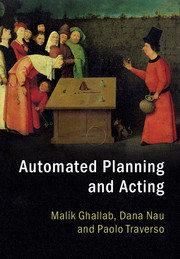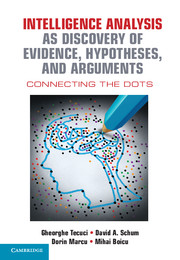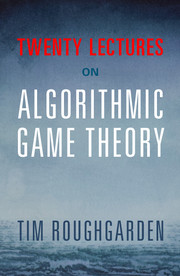Refine search
Actions for selected content:
48276 results in Computer Science
Bibliography
-
- Book:
- Automated Planning and Acting
- Published online:
- 05 August 2016
- Print publication:
- 09 August 2016, pp 321-350
-
- Chapter
- Export citation
8 - Concluding Remarks
-
- Book:
- Automated Planning and Acting
- Published online:
- 05 August 2016
- Print publication:
- 09 August 2016, pp 310-312
-
- Chapter
- Export citation
Foreword
-
-
- Book:
- Automated Planning and Acting
- Published online:
- 05 August 2016
- Print publication:
- 09 August 2016, pp xiii-xiv
-
- Chapter
- Export citation
3 - Deliberation with Refinement Methods
-
- Book:
- Automated Planning and Acting
- Published online:
- 05 August 2016
- Print publication:
- 09 August 2016, pp 74-113
-
- Chapter
- Export citation
Preface
-
- Book:
- Automated Planning and Acting
- Published online:
- 05 August 2016
- Print publication:
- 09 August 2016, pp xv-xviii
-
- Chapter
- Export citation
6 - Deliberation with Probabilistic Models
-
- Book:
- Automated Planning and Acting
- Published online:
- 05 August 2016
- Print publication:
- 09 August 2016, pp 217-275
-
- Chapter
- Export citation
Dedication
-
- Book:
- Automated Planning and Acting
- Published online:
- 05 August 2016
- Print publication:
- 09 August 2016, pp v-vi
-
- Chapter
- Export citation
4 - Deliberation with Temporal Models
-
- Book:
- Automated Planning and Acting
- Published online:
- 05 August 2016
- Print publication:
- 09 August 2016, pp 114-154
-
- Chapter
- Export citation
Frontmatter
-
- Book:
- Automated Planning and Acting
- Published online:
- 05 August 2016
- Print publication:
- 09 August 2016, pp i-iv
-
- Chapter
- Export citation
Appendix A - Search Algorithms
-
- Book:
- Automated Planning and Acting
- Published online:
- 05 August 2016
- Print publication:
- 09 August 2016, pp 313-317
-
- Chapter
- Export citation
Table of Notation
-
- Book:
- Automated Planning and Acting
- Published online:
- 05 August 2016
- Print publication:
- 09 August 2016, pp xi-xii
-
- Chapter
- Export citation
5 - Deliberation with Nondeterministic Models
-
- Book:
- Automated Planning and Acting
- Published online:
- 05 August 2016
- Print publication:
- 09 August 2016, pp 155-216
-
- Chapter
- Export citation
On the Widom–Rowlinson Occupancy Fraction in Regular Graphs
- Part of
-
- Journal:
- Combinatorics, Probability and Computing / Volume 26 / Issue 2 / March 2017
- Published online by Cambridge University Press:
- 09 August 2016, pp. 183-194
-
- Article
- Export citation
1 - Introduction
-
- Book:
- Automated Planning and Acting
- Published online:
- 05 August 2016
- Print publication:
- 09 August 2016, pp 1-18
-
- Chapter
-
- You have access
- Export citation
Contents
-
- Book:
- Automated Planning and Acting
- Published online:
- 05 August 2016
- Print publication:
- 09 August 2016, pp vii-viii
-
- Chapter
- Export citation
WEAK DISHARMONY: SOME LESSONS FOR PROOF-THEORETIC SEMANTICS
-
- Journal:
- The Review of Symbolic Logic / Volume 9 / Issue 3 / September 2016
- Published online by Cambridge University Press:
- 08 August 2016, pp. 583-602
- Print publication:
- September 2016
-
- Article
- Export citation

Automated Planning and Acting
-
- Published online:
- 05 August 2016
- Print publication:
- 09 August 2016

Intelligence Analysis as Discovery of Evidence, Hypotheses, and Arguments
- Connecting the Dots
-
- Published online:
- 05 August 2016
- Print publication:
- 30 August 2016

Twenty Lectures on Algorithmic Game Theory
-
- Published online:
- 05 August 2016
- Print publication:
- 30 August 2016
